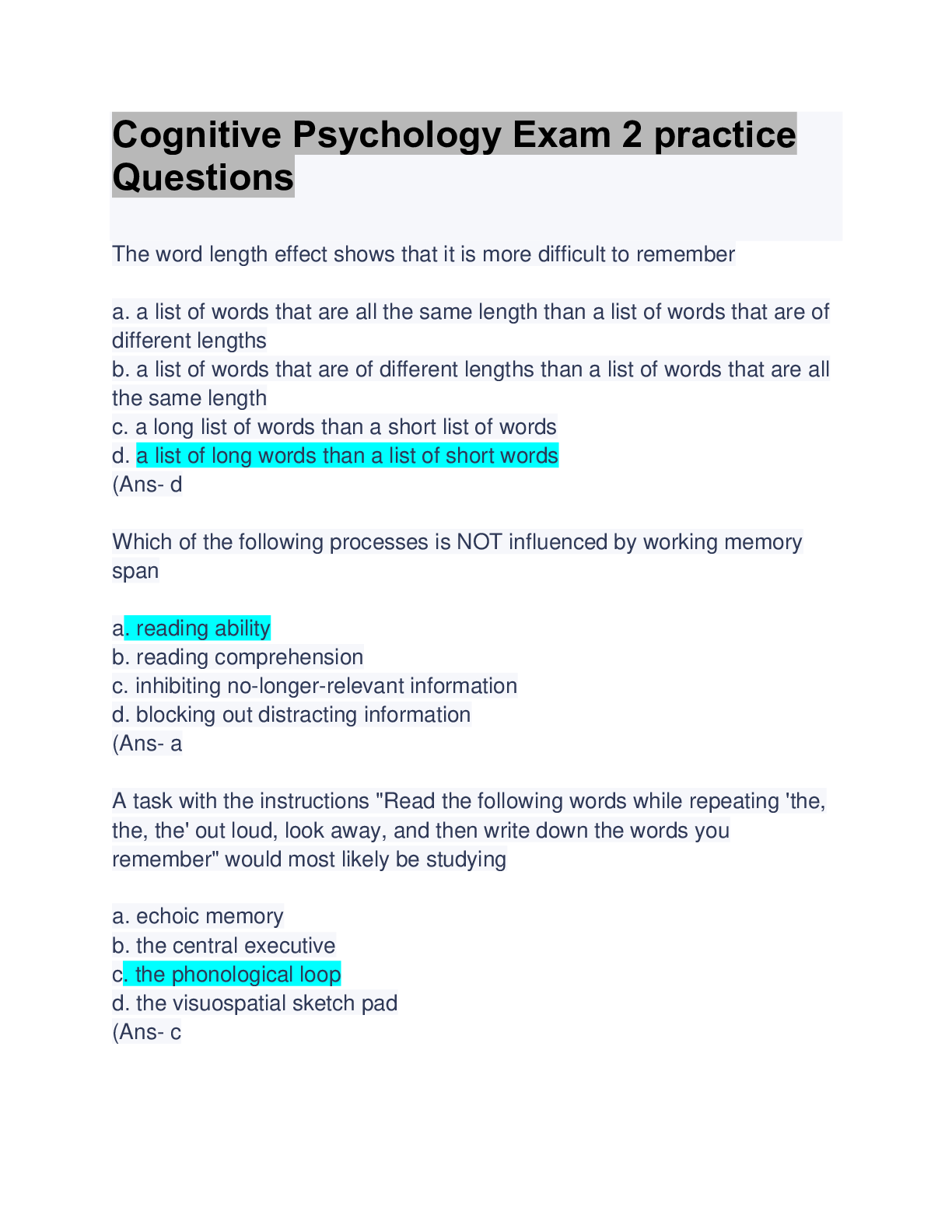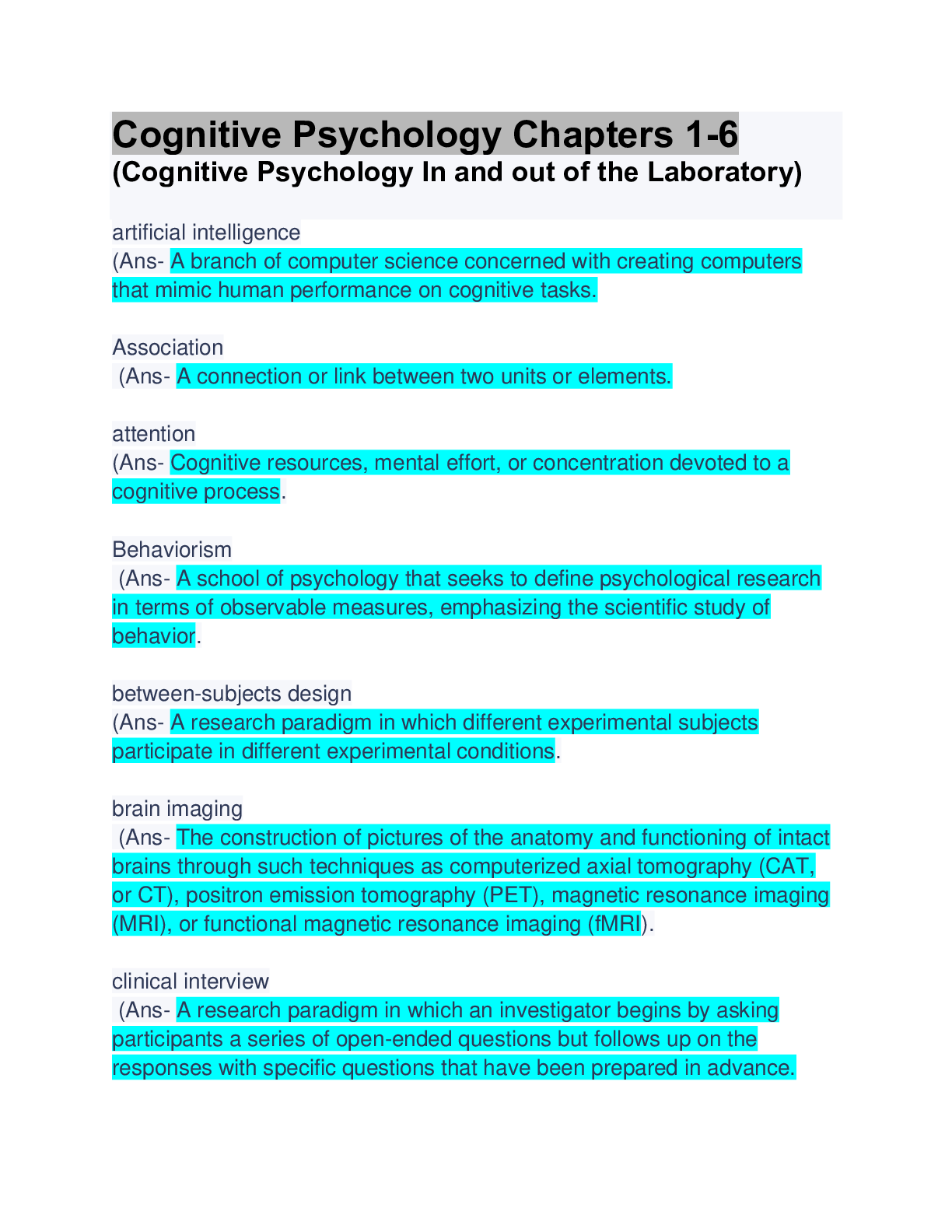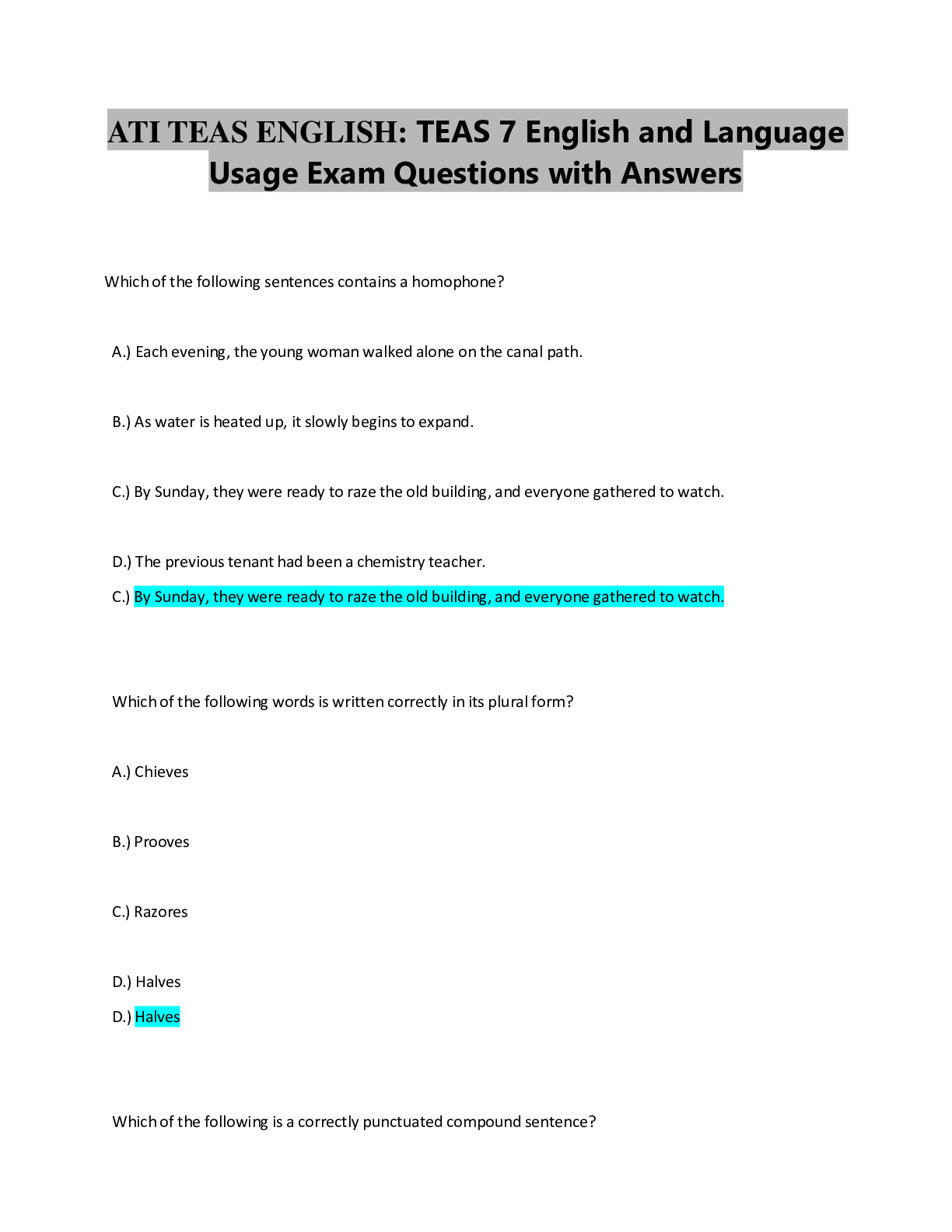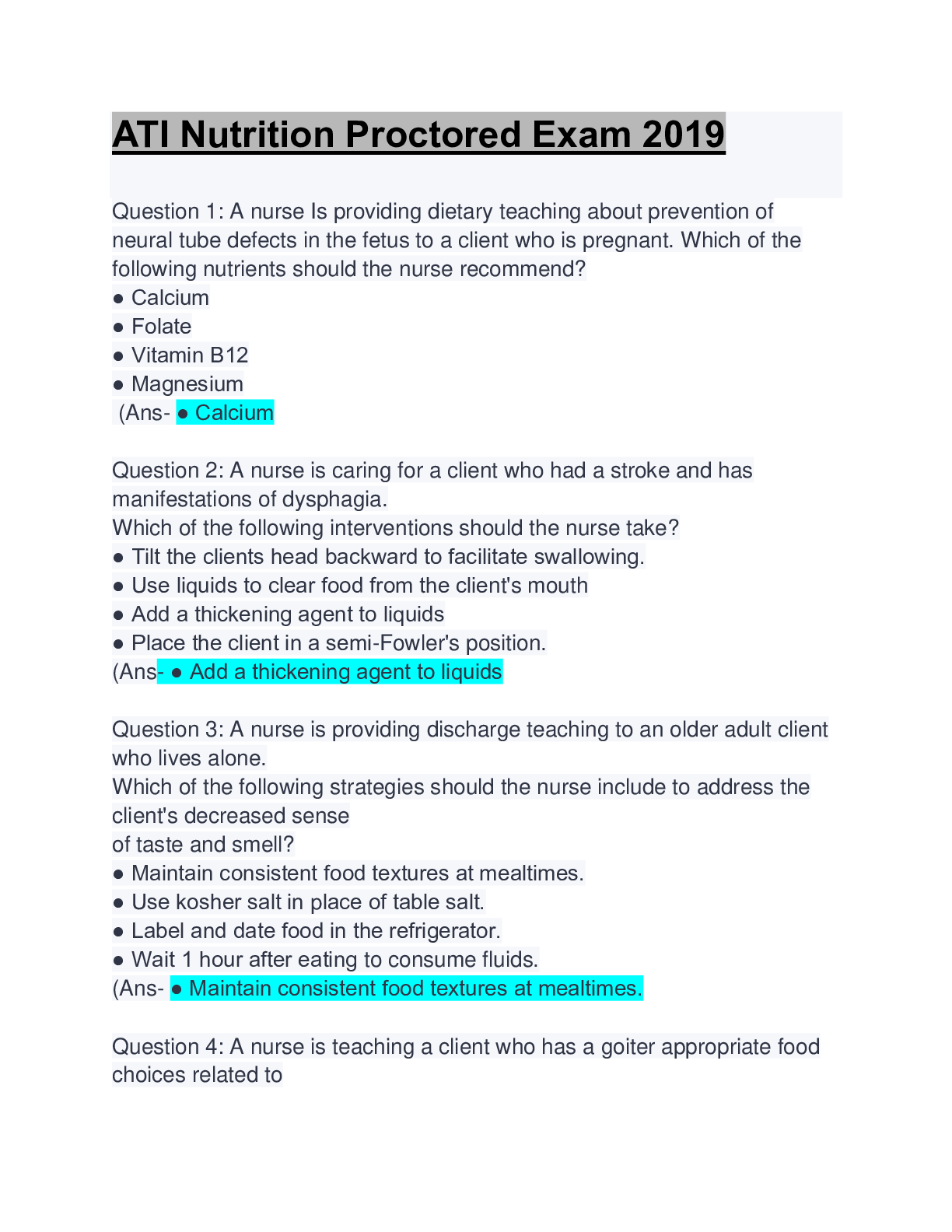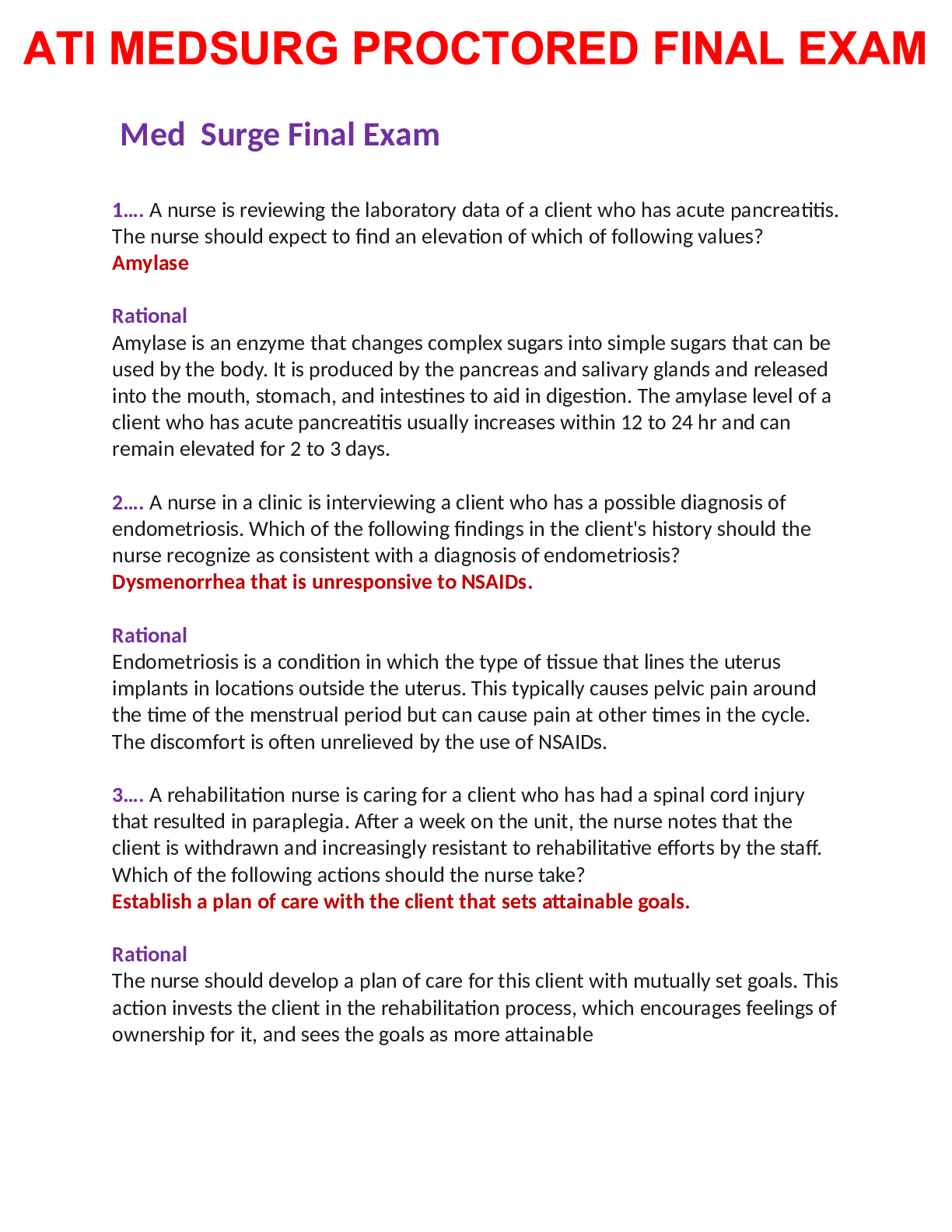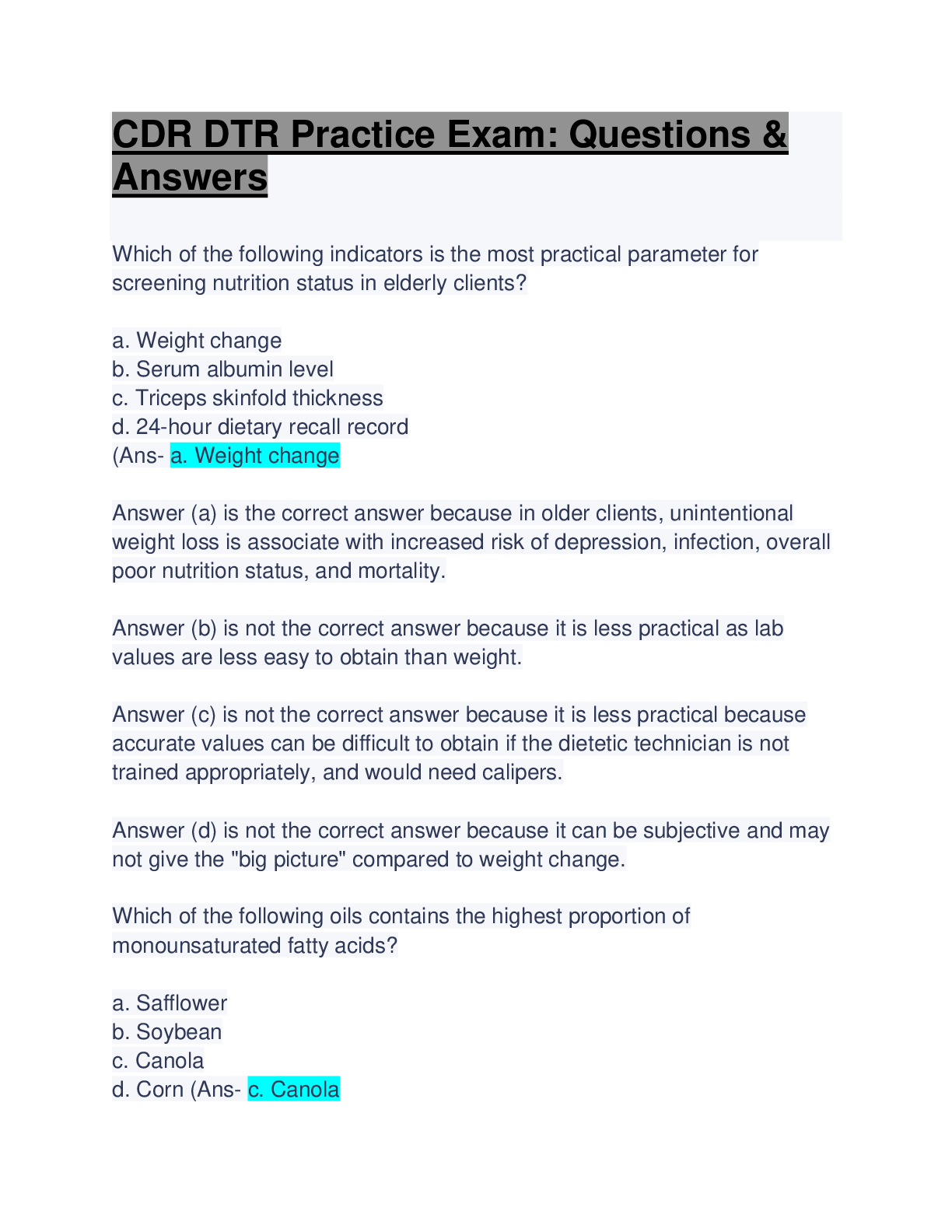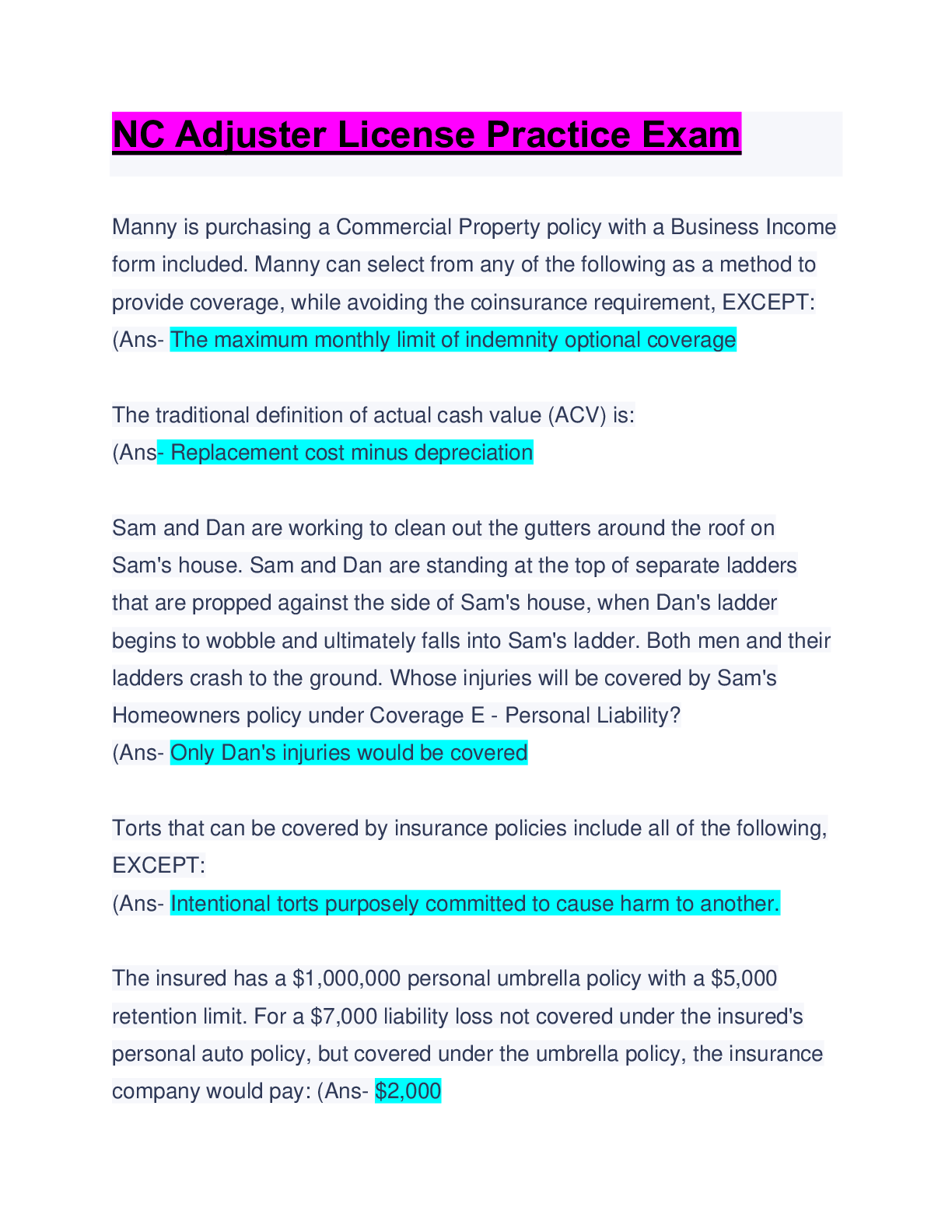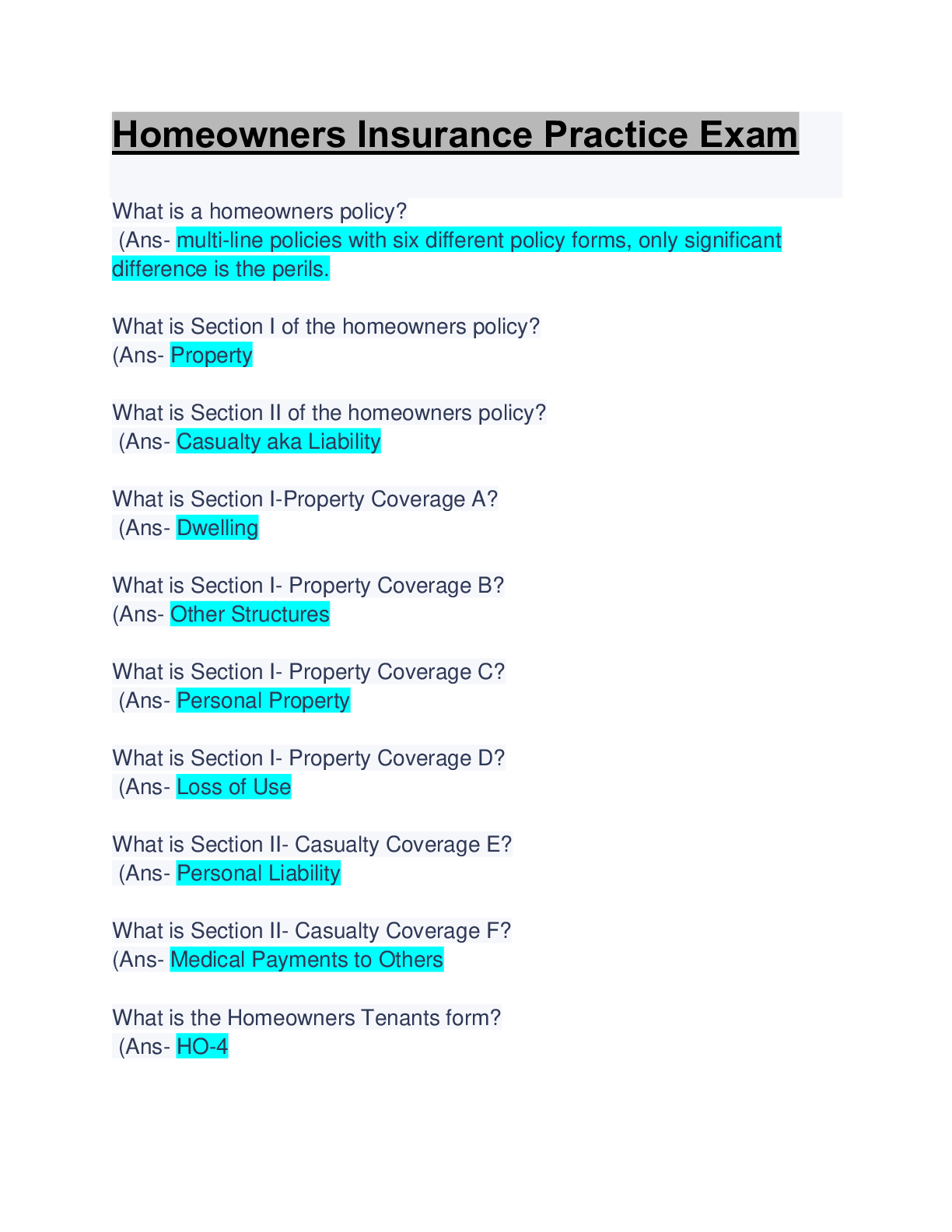Health Care > EXAM > EMT Module 2 Exam: Questions & Answers: A+ Guide Solution (All)
EMT Module 2 Exam: Questions & Answers: A+ Guide Solution
Document Content and Description Below
The scene size-up is the first part of the patient assessment process. It begins as you approach the scene, surveying it to determine: A. if there are any threats to your patient's safety B. the n... umber of injured C. personal safety of all those involved in the call D. the mechanism of injury (MOI) (Ans- A Which of the following is the most accurate statement about scene size-up? A. it takes place as you are approaching the scene B. is it replaced by patent care once you arrive at the scene C. it occurs during the first part of the assessment process D. it continues throughout the call (Ans- D If you arrive at a collision scene where there are police, fire vehicles, and other ambulances already present, you should: A. immediately begin patient care B. conduct your own scene size-up C. ensure that no bystanders are injured D. all of these (Ans- B Which of the following is not an appropriate action when you near the scene of a traffic collision? A. look and listen for other EMS units as you near intersections B. look for signs of collision-related power outages C. observe traffic flow to anticipate blockage at the scene D. attempt to part your vehicle downhill from the scene (Ans- D When you are in sight of the collision scene., you should watch for the signals of police officers and other emergency service personnel because: A. they may have information about hazards or the location of injured persons B. the first ones on the scene are considered to be in charge C. federal law requires you to follow the command of other responders D. they are considered the medical-care experts on the scene (Ans- A When there are no apparent hazards, consider the danger zone to extend at least ____ feet in all directions from the wreckage. A. 25 B. 50 C. 100 D. 200 (Ans- B When a collision vehicle is on fire, consider the danger zone to extend at least ___ feet in all directions, even if the fire appears small and limited to the engine compartment. A. 25 B. 50 C. 100 D. 200 (Ans- C It is essential that the EMT do a good scene size-up. Your scene size-up should identify: A. the potential fora a violent situation B. the name and amount of toxic substances C. the number of patients and their diagnoses D. all of these (Ans- A The EMT's Standard Precautions equipment during the scene size-up may include all of the following except: A. eye protection B. disposable gloves C. face mask or eye shield D. nonrebreather mask (Ans- D Standard Precautions should be taken with all patients. The key element of Standard Precautions is to: A. always wear all the protective clothing B. always have personal protective equipment readily available C. place equipment on the patient as well as the rescuer D. determination which body fluids are a danger to the EMT (Ans- B Certain injuries are common to particular situations. Injuries to bones and joints are usually associated with: A. fights and drug usage B. falls and vehicle collisions C. fires and explosions D. bullet wounds (Ans- B Knowing the mechanism of injury assists the EMT in: A. immobilizing the patient's spine B. determining which Standard Precautions to use C. predicting various injury patterns D. all of these (Ans- C The physical forces and energy that impinge on the patient are influenced by the laws of physics. One of those laws, the law of inertia, stat that: A. the faster you enter a turn, the more your vehicle will be pulled straight B. the slower the speed, the greater the energy loss C. a body in motion will remain in motion unless acted upon by an outside force D. the mass or weight of an object is the most important contributor to an injury (Ans- C You are treating a patient who was involved in a head-on collision. She was the unrestrained driver who took the "up-and-over" pathway. To which part of her body was she most likely to have sustained injuries? A. Skull B. Fibula C. Knees D. Femur (Ans- A Which of the following is least likely to be considered a mechanism of injury for ta patient who was involved in ahead-on collision. She was the unrestrained driver who took the "up-and-over" pathway. A. steering wheel B. windshield C. brake pedal D. dashboard (Ans- C You are on the scene of a car crash. You patient has stable vital signs and is complaining of knee, leg, and hip pain. He also states that he was in the front seat of the car and did not have his seat belt on. What type of collision did he most likely experience? A. head-on, up-and-over B. rear-end C. head-on, down-and-out D. rotational impact (Ans- B Which type of collision is most serious when the occupant is not restrained because it has the potential for multiple impacts? A. side impact B. rear-end impact C. head-on, up-and-over D. roll-over (Ans- D [Show More]
Last updated: 2 years ago
Preview 1 out of 53 pages
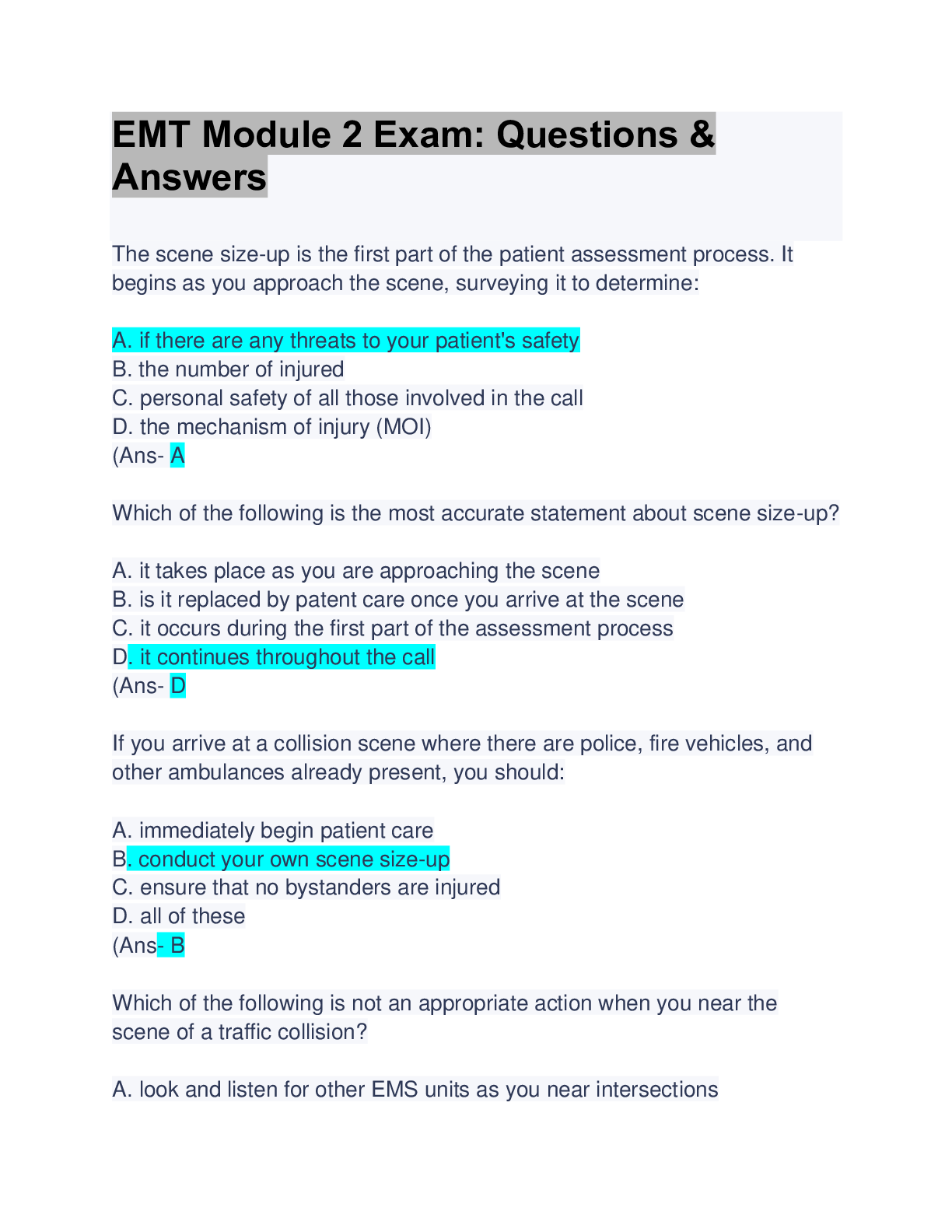
Buy this document to get the full access instantly
Instant Download Access after purchase
Buy NowInstant download
We Accept:

Reviews( 0 )
$8.00
Can't find what you want? Try our AI powered Search
Document information
Connected school, study & course
About the document
Uploaded On
Jul 17, 2023
Number of pages
53
Written in
Additional information
This document has been written for:
Uploaded
Jul 17, 2023
Downloads
0
Views
96



